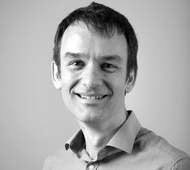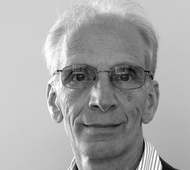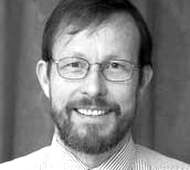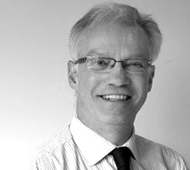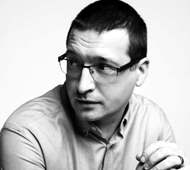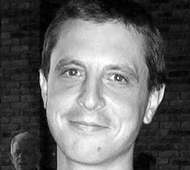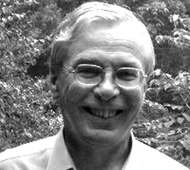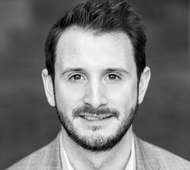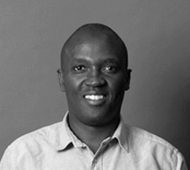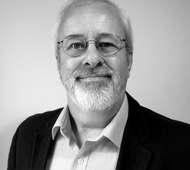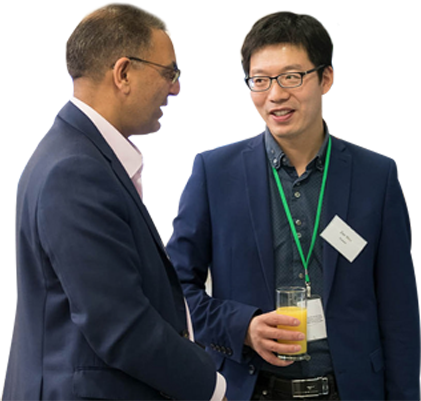David Bartlett - Head of Technology Positioning, u-blox UK
David Bartlett works in the positioning technology (R&D) group at u-blox with a focus on hybrid positioning: bringing together GNSS with terrestrial systems such as UWB and V2X, primarily in support of future autonomous vehicle, driverless car and robotics applications but also for IoT and indoor positioning. Prior to this he was CTO and co-founder of Omnisense delivering high precision indoor IoT tracking solutions. He also worked at Cambridge Positioning systems with a focus on cellular positioning and network aided GNSS techniques.
Bob Cockshott - Knowledge Transfer Manager, Positioning, Navigation, Timing and Quantum, KTN
After 25 years in the space industry working mainly on electro-optical payloads, Bob has spent the last 13 years in the government-funded Knowledge Transfer Network, supporting business in position, navigation and timing, and more recently also quantum technology. Bob has taken a special interest in GNSS vulnerability, and has organised international conferences on vulnerability and its mitigation. Bob is a member of the Cabinet Office PNT Technical Group and chairs the Royal Institute of Navigation’s Technical Committee. Bob is a member of the International Time and Sync Forum Steering Group and is also a Cambridge Wireless Location Based Services SIG Champion.
Ramsey Faragher - Founder, President, and CTO, FocalPoint
Dr Ramsey Faragher is the Founder, President and CTO of Focal Point Positioning, a Fellow of the Royal Institute of Navigation, and a Fellow of Queens' College, at the University of Cambridge. He is the inventor of the Supercorrelation digital signal processing technique, which has redefined the state of the art in GPS positioning. He is the author of dozens of patents, and has been the recipient of numerous awards within the positioning and navigation ecosystem. His company is pioneering improvements to smartphone and automotive navigation systems, and in the past during his time in the Defence sector he has developed technologies that have been to the bottom of the ocean and all the way to Mars. He also helped to improve the bluetooth tracking capabilities of various globally-deployed contact tracing technologies during the Covid pandemic. He regularly contributes to technology podcasts, writes for Forbes, and has provided science advice for two television production companies. Ramsey lives with his family in Cambridge and is currently navigating the challenging landscape of having three small and adventurous children.
Ben has worked in positioning for 15 years, developing algorithms for satellite, cellular and other terrestrial RF technologies. At Qualcomm, Ben works in the Advanced Algorithms group, where current research areas in location are data fusion, use of sensor data for positioning and fitness applications; one day, he hopes to be given the remit to explore the area of olfactory positioning. Ben has a background in Pure Mathematics and a PhD in Combinatorics. He has over 20 different patents filed or granted, mostly on subjects relating to positioning.
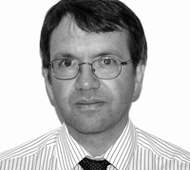
Mark Beach received his PhD for research addressing the application of Smart Antenna techniques to GPS from the University of Bristol in 1989, where he subsequently joined as a member of academic staff. He was promoted to Senior Lecturer in 1996, Reader in 1998 and Professor in 2003. He was Head of the Department of Electrical & Electronic Engineering from 2006 to 2010, then spearheaded Bristol’s hosting of the EPSRC Centre for Doctoral Training (CDT) in Communications. He is the Co-Director of this centre. He leads research in the field of enabling technologies for the delivery of 5G and beyond wireless connectivity; which includes the recent award of an EPSRC Prosperity Partnership in the field of Secure Wireless Agile Networks (SWAN). Mark’s current research activities are delivered through the Communication Systems and Networks Group, forming a key component within Bristol’s Smart Internet Lab. He has over 30 years of physical layer wireless research embracing the application of Spread Spectrum technology for cellular systems, adaptive or smart antenna for capacity and range extension in wireless networks, MIMO aided connectivity for through-put enhancement, experimental evaluation and optimization of Massive MIMO, Millimetre Wave technologies as well as flexible RF technologies for SDR modems. With a strong industrially focused research portfolio, he is also the School Research Impact Director.
Brian Collins - Managing Consultant, BSC Associates
Brian has designed antennas for applications including radio and TV broadcasting, base stations, handsets and consumer products, and has operated his own consultancy firm for the last 12 years. He has published more than 70 papers on antenna topics and contributed chapters to several recent textbooks. He operates a small consultancy company, chairs the Antenna Interface Standards Group and is an Honorary Visiting Professor in the School of Electronic Engineering and Computer Science at Queen Mary, University of London.
Paul Harris - Principal Wireless Architect, VIAVI Solutions
Paul is a wireless technology expert with experience across a range of areas including research, design, implementation and standardisation. He received his PhD from the University of Bristol for evaluating the performance of massive MIMO technology in the lead-up to 5G and is currently a Principal Wireless Architect within the CTO Office at VIAVI Solutions providing thought leadership on new and emerging technologies for 5G, 6G and beyond. In line with this he represents VIAVI within a range of bodies and fora including 3GPP, the O-RAN Alliance, ETSI, the Next G Alliance, the 6G-IA and the UKTIN. His experience prior to joining VIAVI includes representing Vodafone within 3GPP for radio performance aspects, contributing to the development of massive MIMO channel estimation solutions at Cohere Technologies, and working with customers as a domain expert at National Instruments to establish effective research solutions using software-defined radio. He is also a Chartered Engineer, Senior Member of the IEEE, Fellow of the ITP, and an Honorary Industrial Fellow at the University of Bristol.
Peter Kibutu - 5G NTN Market lead, TTP plc
Peter has been working in the cellular industry for over 15 years, specialising in modem system architecture and physical layer development. Before joining TTP, Peter worked in the development of 2G/3G/4G wireless modem products and small-cell base station projects for a number of leading cellular equipment vendors. At TTP Peter has worked with a wide range of clients in the satellite and cellular communication domains, specialising in end-to-end system engineering, modem system development and advising on commercial aspects. Currently Peter is the TTP technical lead for 5G/6G activities and represents the company in range of industry bodies including 3GPP and UKTIN.
Peter has more than 30 years experience of RF and high-speed circuit design, taking chips into production ranging from FM Band II through cellular, Bluetooth and on to UWB at 10GHz. He has been with Qualcomm for 7 years, specialising in low-power RF design for portable and wearable products.
